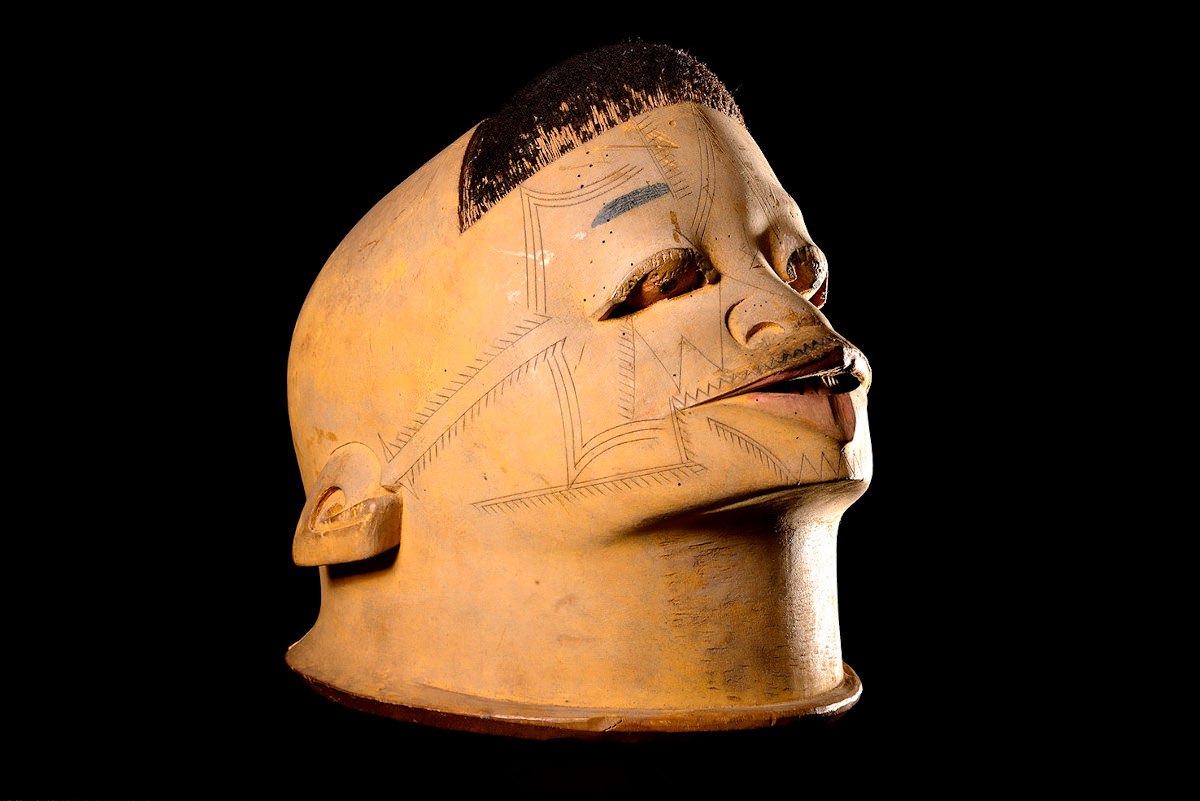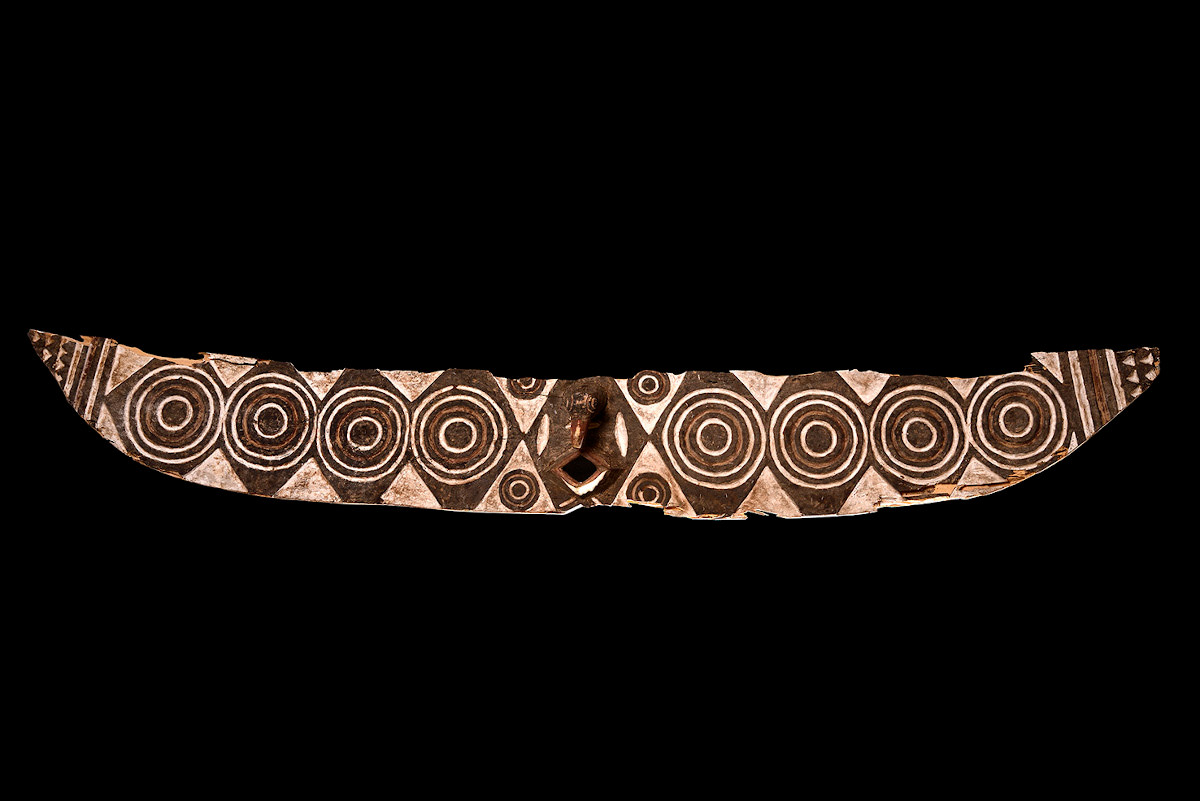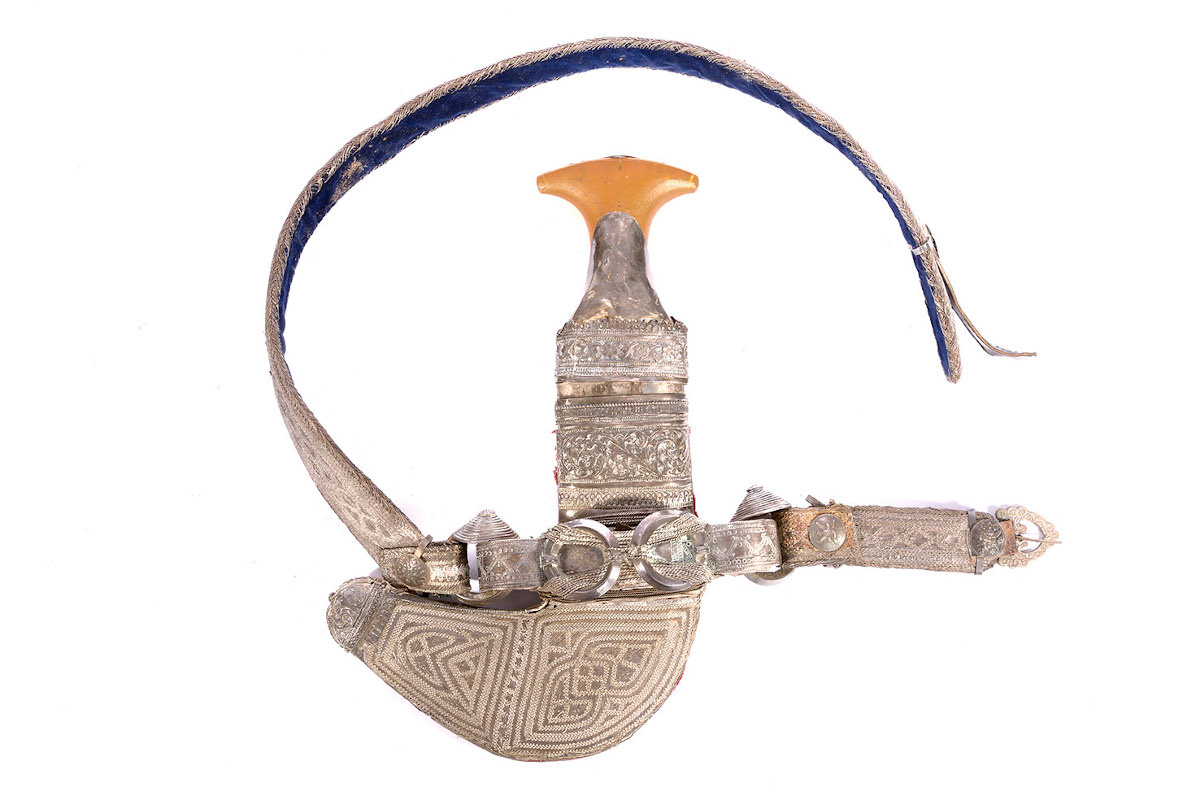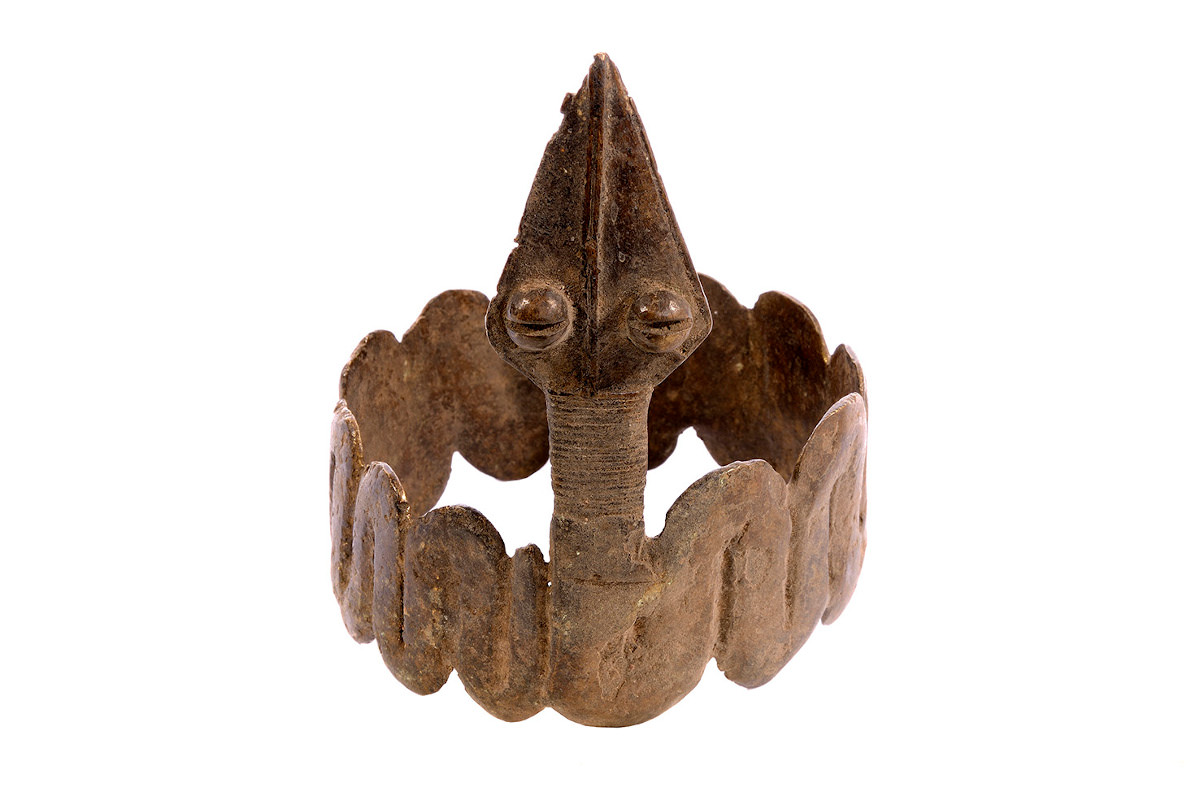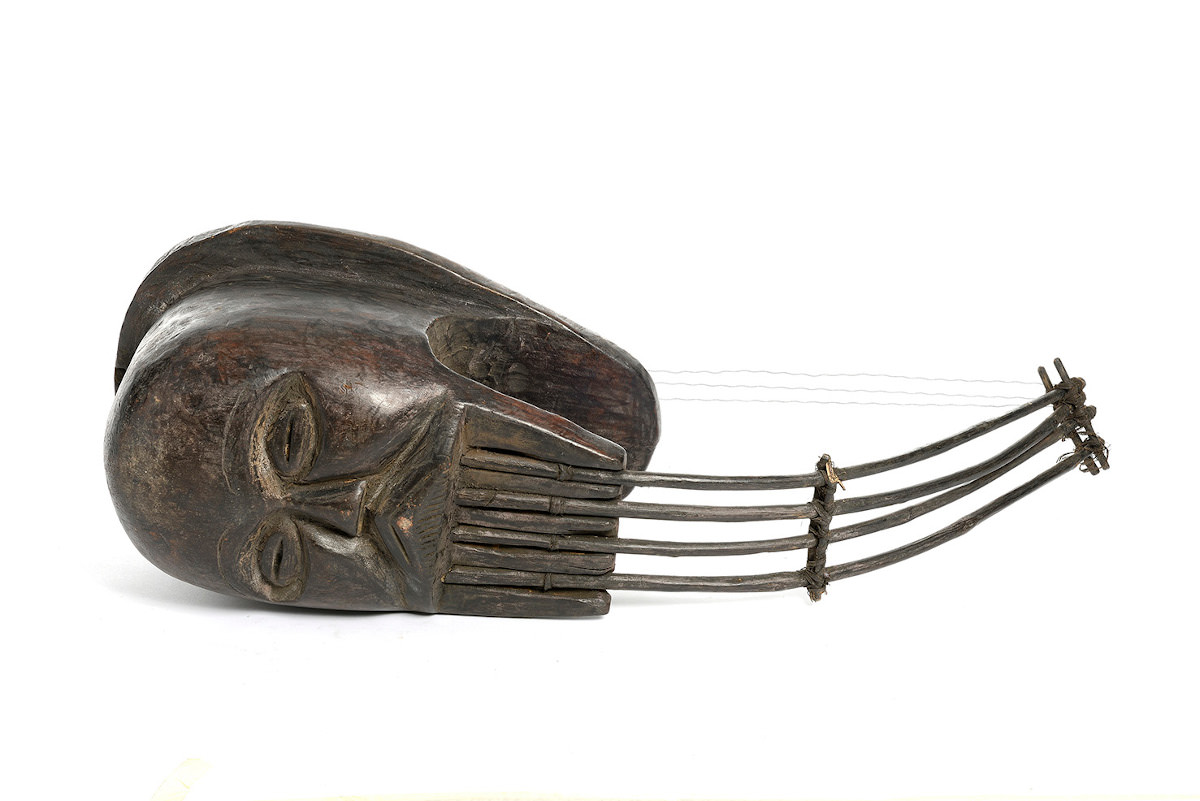The more we know our history and value our art and our cultural heritage, we will be better able to preserve our memories and build new.
Beatriz Yunes Guarita
Museu de Arte Sacra de São Paulo – BUT/SP, institution of the Department of Culture and Economy of the State of São Paulo Creative, a follow up to the anniversary celebrations of her Golden Jubilee to be completed in June 2020, displays "The other Africa”, one of the actions that celebrate the anniversary of São Paulo, under the curatorship of Renato Araujo da Silva, with 303 works of terracotta, funerary urns, More expensive, figurines, arms, jewels, musical instruments, everyday objects, busts and court art of Benin, that represent 29 African ethnic groups. This set is a cut of Ivani collection and Jorge Yunes.
On display are presented hundreds of objects of African artistic culture, of different ethnicities, which make possible a quick look over the material culture of another Africa, who, "While it is an Africa that refers to the traditional world, old, it is an Africa that reconfigured in their own way to his artistic practice in the contemporary world, making of the popular artist a tribute to their work, our ancestors "conceptualizes the curator Renato Araujo da Silva.
The Western world, dubio with his concept of the different, It created its own definition, somewhat folk, about reality and African societies, riddled with cliches. The truth to be achieved, It is closer, and not as ambivalent and contradictory as they were in the past, but a more affordable Africa has received in its rich diversity. "The african or black culture is vast, rica, and transcends borders. For a long time, and today, even with the advances made, it is necessary that the discussion occurs and continues to occur ", declares Beatriz Yunes Guarita, Director President of Ivani Collection and Jorge Yunes.
The gesture of the sculptor, the caress the molded clay and turned into terracotta, the sound of the instruments, the danced mask or the movement of the hands of workers of African folk art, serves as a trigger to our sensations to high levels of arousal allowing the positioning to in unison the same interests the mysteries of life. "Our distances thus decrease. You who once might have been considered a potential enemy or a stranger any can become now a close friend. Art can make us!”, concludes the curator.
Parts of the collection were grouped according to some concepts and / or standards, For better understanding: Terracotas, Masks, statuettes, Jewels, Weapons, Musical instruments, Everyday objects, items of these techniques and / or materials show a visual picture of a history overseas.
Terracotas – In 1928, some workers of tin mining Lt-Col. Dent Young casually "met a group of stone implements and some heads in terracotta, including a human bust and a head representation of a monkey " (GUILLON, 1984, p. 75). It was the second major discovery of ancient Africa that occurred in the twentieth century, along with the heads of Ife bronze "discovered" by the anthropologist Leo Frobenius German eighteen years before. Again the history of African art was being rewritten by the European look. Fifty years later, however, such parts were still being used as a scarecrow in plantations fed miners. objects, along with other developed by a completely unknown culture hitherto, They were therefore known by the name of the region where this occurred mining: "Enough". The Nok culture of the pieces exhibited here refer to their older counterparts.
Funeral urns – The archaeological site called Bura, Niger, It was discovered by chance in 1973. Excavations revealed a vast necropolis which contained different funeral urns, certain natural shapes with well. Little is known about the responsible for preparing these objects, also known as "Black Hole phalluses". Speculation about the phallic shape of the polls and the opening at the tips of some of them, why farmers "would seed" in the ceremonial time of planting and, therefore, They indicate a "sexual nature" given the fertility of the land would be chances for a parallel function of these polls, but they could never get a definitive proof.
Bustos and Art Court of Benin (Nigeria): Following directions previously given by Paula Ben Amos (1980) in their comparative studies of commemorative heads of the ancient Kingdom of Benin, Barbara Plankensteiner (2007, p. 83) He said that one of the prerequisites for royal succession was that "each newly crowned oba [King] would have to install an altar in the palace in honor of his predecessor. The altar should be decorated with a matched set of commemorative heads, cast brass ". These altar figures made up an important part of worship tradition of the royal ancestral lineage and the remembrance of important figures in the history of the Kingdom of Benin (Southeast current Nigeria).
Masks: The use of masks in traditional Africa, with rare exceptions, It is generally attached to a specific rite. Divide-se, generically, in uses related to agricultural practices, often with seasonal festivities; the search for increasing fertility, whether humans, is the earth; the celebration of memorable events etc.. - all practices that were somehow related to the culture of valuing ancestry. Respect and even ancestor worship establish the regularity of nature and well-being of society. They are a central event in many cultures of the continent and therefore influence in other aspects of traditional African societies, including the use of masks. The whole notion of using masks associated with the masked figure, their vestments, the songs played, the dances, the cries and rhythms evoked reminds us that our perception of abstract wooden objects called simply "masks" and placed anodyne form the walls of the little museum protects the original sense. But there arranged in order to resolve our uncertainties with respect to these "African mysteries", masks, in its powerful formal and symbolic abundance, impose all of us mixed feelings of mystery and awe.
statuettes: The African figurines workshops are generally formed by households or associations of experts working on different types of materials used in the production of three-dimensional objects of various uses. The raw material most commonly used is actually the wood, but it is not uncommon to produce figurines with metal alloys, clay, mud, terracota, stone, among other material. Although the techniques of each of these materials vary from one culture to another and from age to age, the tools used for the implementation of these objects are equivalent in space-time. historically, when carving the traditional object conventionally the technique in identifying whittle from a single block of wood. Another common artistic device is the whittle of ethnic brands such as scarification. In addition, many groups resort to painting the wood surface, as well, in some cases it was found the introduction of metal objects and other materials within some figurines power. The study of African figurines reveals the extent of their diversity. A series of sculptures, everyday objects, jewelry and even masks do not correspond to the category "religion". Some desecrated objects are discarded after use or reinterpreted. Still others, example of the implements, scepters and weapons may or may not be prestigious objects, ancestor worship altar elements or only objects of practical use - what distinguishes the functions of these objects of multiple sort keys are more their historical and cultural contexts than their physical characteristics.
Weapons: armament activities and traditional African warfare tactics were partially studied in the process of colonization and reported by European travelers over more than three centuries. In addition to these reports that record historical events, a large part of the material culture was preserved arms. One of the most famous and impressive forms of African weapons, either on his tactical skill, is for its technology, They are called “throwing knives”. Manufactured in the regions South African center were used for fighting in wars or executions. Formats of throwing knives and swords could range from a simple sword, as Collection Ivani and Jorge Yunes, to the throwing knife copies complex in which, from a single sheet, derived from three or more rods, multiple pointed oval or curved blades.
Jewels: African jewelry, from the lightest ornaments made with simple elements of nature even the most intricate and sometimes heavy objects designed by imagination and human intelligence, handling techniques, values and knowledge that are conserved, modified and transmitted from generation to generation communally. Being prestigious objects, protection or “powers”, Africa's jewels connect sensibilities through a tacit understanding of the exchange between the practical purpose of the ornament, the exact accuracy of magical-protective belief and sense of immersion, the gaze of the other, the entire share cosmos. Thus, the objects selected by the curator would only small dynamic examples of particular cultures of this great driving force of adornagem that is universal.
Musical instruments: The artistic point of view, Africa is best known worldwide for his enormous musical genius. The cut is very narrow when it is reduced to immense variety of styles and rhythms of the continent only to percussion instruments. Common, to all people send language, as soninquê Senegal, the Bamana of Mali and marka, the Dioula and Lig bi Ivory Coast, Guinean susu, among others, the use of the harp in West African culture is ancient and is connected to rhapsodes visiting the cities singing praises, myths and epic historical with the help of musical instruments. Among other instruments, o elephants, produced in bone, wood or ivory is also common to different African peoples. Although its use in some respects to be "universal", It is played in religious festivities or greeting to authorities, for example, elephant tusks worked artistically also played important role in the cult of the ancestors of the old aristocracy Kingdom of Benin whose heyday occurred during the century. XVI.
Everyday objects: The world of everyday objects ranging from manufacture, technological study and observation of forms and uses spoons, doors, locks, board games, hunting objects, fishing etc.. Since the beginning of relations between Europeans and Africans in the mid-fifteenth century, Traditional African everyday objects were brought by the thousands to Europe. Be as curious objects or selected objects to ethnographic classification, household, agricultural implements, personal belongings crammed the curiosity cabinets and, later, also museums. With the advent of modernism, even during the rule of the colonial factor, numerous European artists and intellectuals began to make visual observations on the pieces. Despite apparently being "ordinary", They are shown in its form the technological skill and sensitivity African Art.
As most prominent among the exposed selection, valuable pieces of Afro-Christian art and Arte Sacra Ethiopic, where one can appreciate a copy of Ethiopian Processional Cross, in tempera on bronze, not rare example in European collections.
There are many other Africas inside than it really is and that we behave in our heads and hearts of this immensity of what it actually is – this that, of everything we know today, certainly our Mother Africa! But the transformation of our perception of Africa as secondary, as a mere “object of desire” for a more positive attitude “subject of its own knowledge” does not occur from the outside in, but instead, from the voice of his own originality Africa will prove to the world and shows that attempts to reveal a little of this African universe others who want to be seen by all.
Renato Araujo da Silva
Recognizing the African presence broadens our conception of the world and allows us to understand aspects of relations between peoples and regions of the world little known and understood over time. Such learning illuminates our understanding of historical and social dynamics processes.
Beatriz Yunes Guarita
Sign up to receive Event News
and the Universe of Arts first!
| Exhibition: “The other Africa " – Ivani collection and Jorge Yunes |
| Curated By: Renato Araujo da Silva |
| Opening: 25 January 2020, Saturday, às 11h |
| Period: 26 January to 23 March 2020 |
| Local: Museu de Arte Sacra de São Paulo – www.museuartesacra.org.br |
| Address: Avenida Tiradentes, 676 -Light, São Paulo (Tiradentes station of subway) |
| Tel.: 11 3326-5393 -scheduling / educational guided tours |
| Timetables: From Tuesday to Sunday, from 9 às 17h | Crib Napolitano: from 10 às 11h, and from 14h to 15h |
| Entrance: R$ 6,00 (One piece) | R$ 3,00 (Half national entry for students, private school teachers and I.D. Young – upon proof) | Free Saturdays | exemptions: children up to 7 years, adults from 60, public school teachers, disabled people, ICOM members, police and military – upon proof |
| Number of works: 303 |
| Techniques: terracotas, funerary urns, More expensive. figurines. arms, jewels, musical instruments, everyday objects, busts and objects of art of cutting Benin |
| Dimensions: varied |
.
CIJY – Ivani collection and Jorge Yunes
Formed over five decades, to Ivani collection and Jorge Yunes (CIJY) gathers a precious artistic and bibliographic collection that runs 23 centuries and five continents. Since 2017, It has been organized, cataloged and studied, to ensure its preservation and dissemination.
The collection is characterized by its great diversity. The items range from paintings – Old Masters, European painting, French, Italian, Brazilian and international modern art, sculpture, drawing, engraving, asian art, African, colonial Brazilian and Latin American. Also conserves sacred art, tankards, icons, marfins, silver, furniture and decorative art. The library brings rare publications mostly Brazilian, including first editions and rare periodicals.
initiated ivani and Jorge Yunes, the collection as a whole is being organized, structured and cataloged by his daughter Beatriz Yunes Guarita, who set up a team in the Collection areas, Search, Conservation and restoration, Bibliography and Institutional Relations.
Renato Araujo da Silva
Renato Araújo is a researcher, with performances in the Association Museum Afro Brazil and Ivani Collection and Jorge Yunes. It has experience in African philosophy and art fields. With an emphasis on African jewels and ancient philosophy, it acts mainly with the following themes: African jewelry, African arts, art and jewelery african-Brazilian, primitive money, jewelry collection of the Museum of Archeology and Ethnology of the University of São Paulo (MAE-USP), economic anthropology, archeology, museum collections and cataloging, and conducts research on pre-Socratic philosophy, Democritus and atomism old.
The Museum
The Sacred Art Museum of Sao Paulo, institution of the Department of Culture and Economy of the State of São Paulo Creative, It is one of the most important of its kind in the country. It is the result of an agreement signed between the State Government and Mitra Archdiocese of Sao Paulo, in 28 October 1969, and its installation date 29 June 1970. Since then, the Museum of Sacred Art of São Paulo came to occupy wing of the Monastery of Our Lady of the Immaculate Conception of Light, on Avenida Tiradentes, downtown São Paulo. The building is one of the most important monuments of colonial architecture São Paulo, built of rammed earth, rare remaining example in the city, last farm convent city. It was listed by the Historical and Artistic Heritage Institute National, in 1943, and the Council for the Defense of Heritage, Architectural artistic and the State of São Paulo, in 1979. It has much of its collection also listed by IPHAN, since 1969, whose priceless heritage includes relics of stories in Brazil and worldwide. The Sacred Art Museum of Sao Paulo holds a vast collection of works created between centuries 16 and 20, counting with rare specimens and significant. There are more than 18 thousand items in the collection. The museum has works of recognized names, as Frei Agostinho da Piedade, Frei Agostinho de Jesus, Antonio Francisco Lisboa, the "Aleijadinho" and Benedito Calixto de Jesus. Noteworthy are also the collections of nativity scenes, silverware and jewelery, Lampadarios, furniture, altarpieces, altars, clothing, liturgical books and numismatic.
OF SACRED ART MUSEUM SAO PAULO - MAS / SP
Chairman of the Board of Directors – José Roberto Marcelino dos Santos
CEO – José Carlos Marcal de Barros
Director of Planning and Management – Luiz Henrique Neves Marcon
Museologist - Beatriz Cruz

